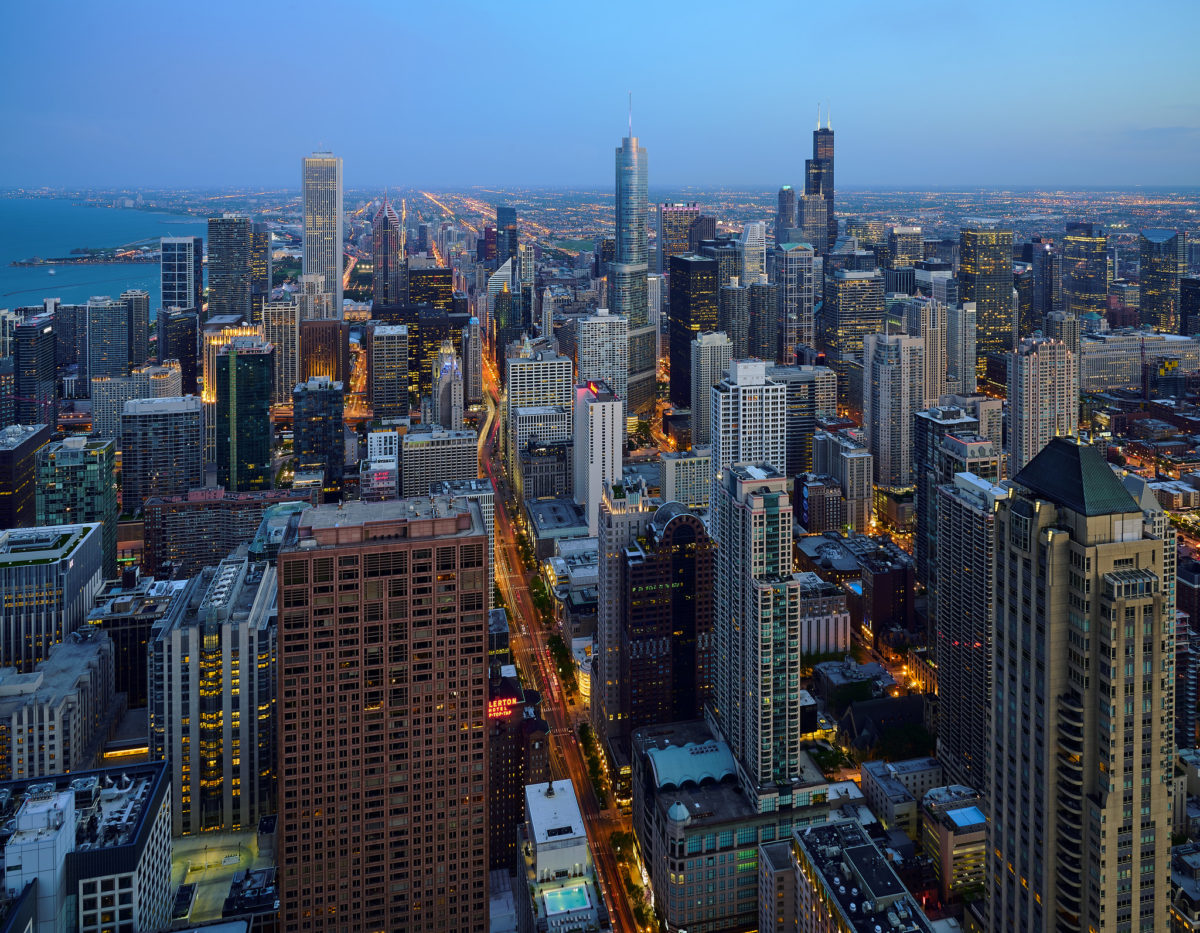From pv magazine USA.
Chase Tower is one of the tallest skyscrapers to dominate Chicago’s skyline. But it is not the building’s height, at 869 feet, which makes it prominent but rather what’s in it: the headquarters of Exelon, the largest owner and operator of nuclear power plants in the United States.
However, despite there being 11 nuclear reactors in operation in the state of Illinois, Chicago is moving to a different power source: renewable energy. Yesterday, Chicago Mayor Rahm Emanuel unveiled the Resilient Chicago plan, which with action number 38 commits to “transition to 100% clean, renewable energy in buildings community-wide by 2035”.* The deadline for all city government buildings to be powered solely by renewables, first established in 2017, has been brought forward to 2025.
The policy has been introduced as part of environmental group the Sierra Club’s “Ready for 100” campaign, and Chicago is the largest city to join the effort to date. (Editor’s note: While Los Angeles Mayor Eric Garcetti has announced his city is on a path to 100% renewable energy, it is not clear if the formal goal is 100% renewable or 100% zero-carbon, and LA is not included in the Sierra Club’s Ready for 100 list.)
The language of the Resilient Chicago text says “clean, renewable energy”, and the Sierra Club does not include nuclear as part of its Ready to 100 campaign. The new policy is a particularly interesting move for Emanuel, once considered one of the more pro-nuclear politicians in the Democratic Party, and a man who brokered the deal that created Exelon.
Were Chicago to include nuclear in a 2035 target, it would require either buying power from existing plants instead of investing in new generation, or starting new nuclear plants within six years. Given the high cost of nuclear compared to wind and solar, few decision makers are contemplating that option.
The City of Chicago and stakeholders will have until December next year to come up with a plan to meet the city’s new mandate.
Community solar, electric buses
And there are a number of other clean energy commitments among the 50 action points in the wide-ranging Resilient Chicago report. Chicago plans to complete the electrification of its bus fleet by 2040, and the city is also making a push for community solar.
Action 37 states the city will “promote greater access to community solar”, by supporting the Illinois Power Agency’s community incentive programs and by incentivizing community solar through voluntary programs, with the Chicago Renewable Energy Challenge highlighted.
Since the passage of the Future Energy Jobs Act in the Illinois General Assembly, Chicago has seen a boom in community solar, with 1.8 GW of projects applying for block grants in just the last two weeks, more than ten times the amount the state had planned for in its block grant program.
*Editor's note: Although Resilient Chicago only says “100% renewable energy”, and does not specify whether this refers to electricity and heat or only heat, as has been the case with other renewable energy commitments we believe that this refers only to electricity.
This content is protected by copyright and may not be reused. If you want to cooperate with us and would like to reuse some of our content, please contact: editors@pv-magazine.com.



Energy or just electricity? The reference to buildings suggests that heating (much of which is currently with oil and gas) is included. However there is no sign of a commitment on transport. Fully electric transport is extremely difficult and I don’t know of any city that has a real plan for it.
We rely on journalists to pin down the actual commitments city leaders are making, and not let them get away with hyperbole.
Hello James,
We’ve had this conversation before. We refer to 100% renewable electricity commitments as 100% renewable energy, and I use the exact language out of Action Item 38: 100% reneweable energy in buildings. I’m sorry you don’t like the wording, but that’s how we refer to it in the United States. There isn’t a big movement here to decarbonize heat (yet) in the United States and transportation is long ways off, so no one here is confused.